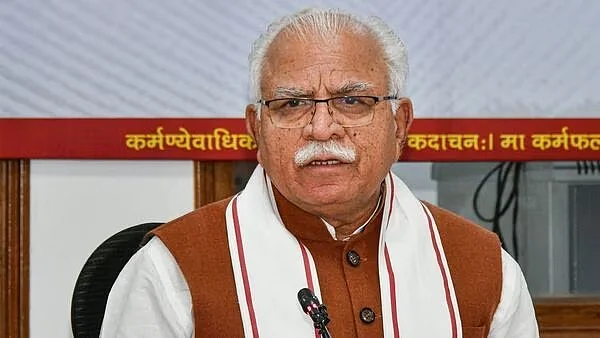Bihar to get its first nuclear power plant as part of national SMR rollout

In a groundbreaking move, the Indian government has chosen Bihar to host its first nuclear power plant. The facility, planned for Nawada district, will form part of India’s nationwide rollout of Small Modular Reactors (SMRs). This initiative not only strengthens Bihar’s energy infrastructure but also brings eastern India into the heart of the country’s nuclear ambitions.
Understanding SMRs: The Future of Nuclear Energy
Small Modular Reactors (SMRs) represent a new generation of nuclear power technology. Unlike traditional large-scale nuclear reactors, SMRs offer compact, scalable, and more affordable options. These reactors generate up to 300 megawatts (MW) and can be manufactured in factories before being transported to the site. Therefore, they significantly reduce construction time and costs.
Moreover, SMRs come with advanced safety features. Their passive cooling systems reduce the chances of accidents, while their smaller size allows easier control. As India transitions to clean energy, SMRs are expected to play a vital role due to their flexibility and efficiency.
Why Bihar Is a Strategic Choice
For decades, Bihar has depended largely on thermal and hydroelectric power. However, demand continues to rise, and the existing power sources often struggle to keep up. By setting up a nuclear power plant in Rajauli, Nawada district, the government aims to change that scenario completely.
The location offers strategic advantages. It has access to the Phulwaria Dam, which will supply water for cooling operations. Additionally, authorities are exploring the use of Ganga water as an alternative. This combination of location, infrastructure, and urgency makes Nawada an ideal choice for launching Bihar’s first nuclear project.
Aligning with India’s National Nuclear Vision
India has set an ambitious target: achieve 100 gigawatts (GW) of nuclear energy capacity by 2047. SMRs will be central to this plan. Their smaller size enables quicker deployment, especially in regions like Bihar that are yet to benefit from nuclear technology.
Bihar is one of six states identified by the central government for SMR deployment. Union Energy Minister Manohar Lal Khattar confirmed this during a recent energy review meeting, emphasizing the Centre’s full support for the project. This announcement positions Bihar as a key player in India’s broader clean energy strategy.
NTPC and ASHVINI to Drive the Project
The development will be led by Anushakti Vidyut Nigam Limited (ASHVINI)—a joint venture between NTPC Limited and Nuclear Power Corporation of India Limited (NPCIL). NTPC, holding a 49% stake, brings extensive experience in power generation. NPCIL, on the other hand, contributes its technical expertise in nuclear operations.
Together, they form a formidable team. NTPC has already begun feasibility studies and requested land from the Bihar government. Officials are also working closely with state water authorities to finalize the water supply route. Thanks to this collaborative approach, the project is moving forward with clear coordination and shared responsibility.
Economic, Environmental, and Social Benefits
This nuclear power plant will deliver far-reaching benefits. First and foremost, it will provide a stable and clean power supply, helping reduce Bihar’s reliance on fossil fuels. Unlike solar or wind energy, nuclear power remains unaffected by weather conditions, ensuring a consistent electricity flow.
Furthermore, the project will generate substantial employment. From construction workers and engineers to administrative staff, the plant will create thousands of direct and indirect jobs. As a result, local businesses will benefit from increased economic activity.
Industrially, the region stands to gain even more. Reliable electricity can attract manufacturing, IT, and service sectors to Bihar, promoting regional development. At the same time, reducing carbon emissions will help the state meet its environmental targets.
Community Engagement and Environmental Considerations
As the project advances, community awareness becomes crucial. The government plans to launch outreach campaigns to inform local residents about nuclear safety, job opportunities, and long-term benefits.
Environmental impact assessments are also in progress. The authorities are carefully evaluating water usage and ensuring that the project doesn’t disrupt agricultural irrigation or natural ecosystems. By prioritizing sustainability and community inclusion, the plant is more likely to gain public trust and long-term support.
Project Timeline: What to Expect Next?
The journey from proposal to commissioning involves multiple phases. Here’s a look at the expected timeline:
| Phase | Timeframe | Key Activity |
|---|---|---|
| Feasibility & Review | 2025–2026 | Site study, land and water approvals |
| Design & Planning | 2026–2027 | Reactor blueprint, safety clearances |
| Construction Begins | 2028 | Groundwork, structure building |
| Operational Phase | 2031–2032 | Testing and commissioning |
Although nuclear projects take time to build, their long-term benefits are immense. Bihar’s proactive support could even fast-track certain stages, especially since the state government has shown eagerness to collaborate.
Conclusion: A New Era for Bihar
Bihar’s first nuclear power plant will usher in a new chapter of growth, clean energy, and regional pride. With strategic planning, central support, and cutting-edge SMR technology, the Nawada project stands as a symbol of India’s energy transformation.
Not only will this development strengthen Bihar’s economy, but it will also place the state on the nuclear map of India. More importantly, it highlights how decentralized energy planning and innovation can drive sustainable progress.
As the country looks toward a carbon-neutral future, Bihar’s leap into nuclear energy proves that progress isn’t just for the metros—it’s for every corner of India.






